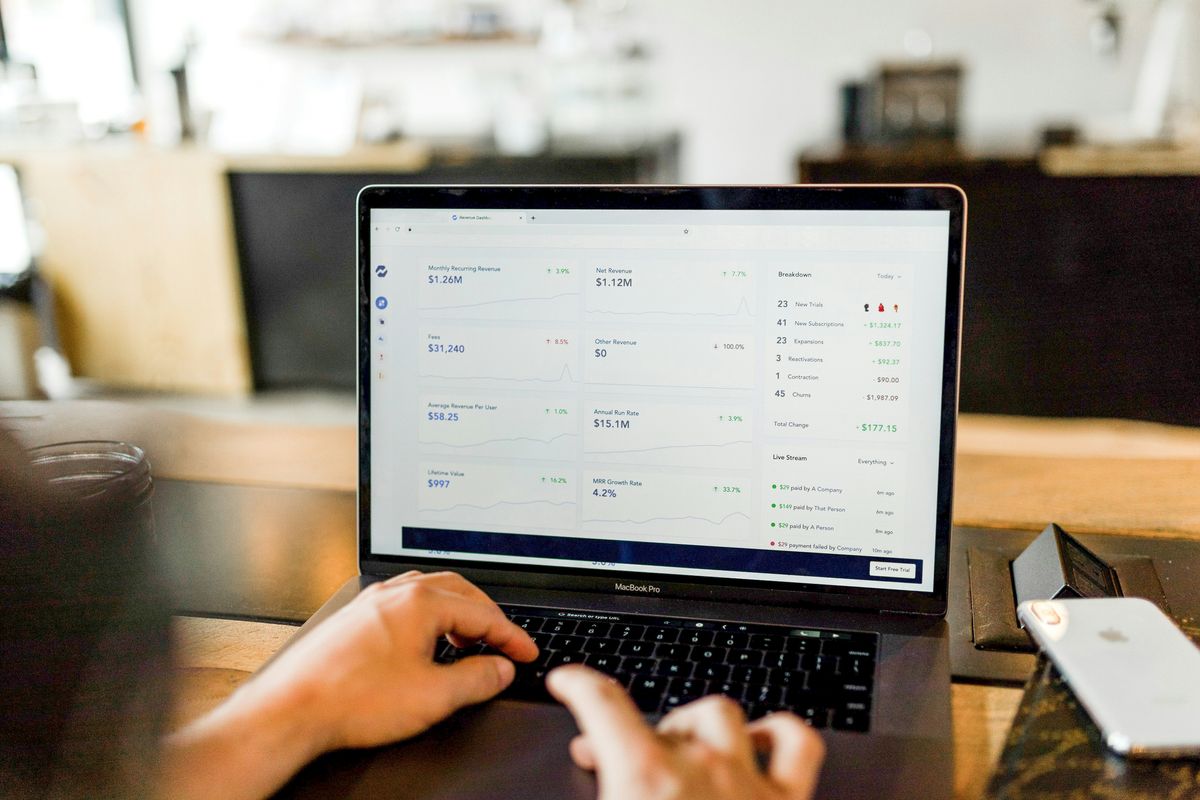Understanding Bank Current Accounts: What You Need to Know
By Budget Savvy Hub | Updated January 17, 2024
Bank Current Accounts are essential financial tools that facilitate a wide range of transactions. Understanding how they work, their benefits, and how to choose and manage one effectively can significantly enhance your financial management skills. This article delves into the basics of Bank Current Accounts, their benefits, factors to consider when choosing one, and tips for managing your account effectively.
Table of Contents
Key Takeaways
- Bank Current Accounts are fundamental financial tools that provide ease of transactions, access to overdraft facilities, and cheque book and debit card facilities.
- Understanding how a Bank Current Account works can help you utilize it effectively for your financial needs.
- Choosing the right Bank Current Account involves considering factors such as fees, interest rates, services offered, and the bank’s reputation.
- Comparing different Bank Current Accounts can help you find the one that best suits your financial needs and preferences.
- Effective management of your Bank Current Account includes understanding your account statement, avoiding bank fees, and ensuring your account’s security.
Understanding the Basics of Bank Current Accounts
What is a Bank Current Account?
A Bank Current Account is a type of deposit account that individuals, businesses, companies, organizations, public enterprises, etc., can open with any bank. It’s primarily used for business transactions, although individuals can also use it for their daily financial activities. Unlike a savings account, there are no restrictions on the number of transactions that can be made from these accounts.
The main features of a Bank Current Account include:
- Overdraft facility
- No limit on the number of transactions
- Cheque book and debit card facilities
Remember, while a Bank Current Account offers numerous benefits, it’s important to manage it wisely to avoid unnecessary fees and charges.
How Does a Bank Current Account Work?
A bank current account is a fundamental tool for managing your everyday finances. It’s where your salary is deposited, and from where you pay your bills, make purchases, and conduct other financial transactions. The operation of a bank current account can be broken down into three main steps:
- Deposits: You or your employer deposit money into the account. This can be done through direct deposit, cash or cheque deposits, or online transfers.
- Transactions: You use the money in your account to carry out transactions. This could be through direct debit payments, card transactions, online banking, or cheque payments.
- Withdrawals: You can withdraw money from your account at any time, either at an ATM, through online banking, or at a bank branch.
Remember, it’s essential to keep track of your transactions to avoid going into overdraft without planning.
These steps may vary slightly depending on the bank and the specific features of the account. Some accounts may offer additional services like overdraft facilities, cheque books, and debit cards.
Benefits of Having a Bank Current Account
Access to Overdraft Facilities
One of the key benefits of a bank current account is the access to overdraft facilities. This feature allows you to withdraw more money than you have in your account, essentially lending you a small amount in times of need. It’s important to note, however, that this facility usually comes with interest charges and fees.
Overdraft facilities can be particularly useful in certain situations. For instance, they can help cover unexpected expenses or tide you over until your next paycheck. Here are a few scenarios where an overdraft might come in handy:
- Emergency medical expenses
- Unexpected car repairs
- Large, necessary purchases that can’t wait
Remember: While convenient, overdrafts should be used sparingly and responsibly. They are not a long-term solution for financial difficulties.
When considering a bank current account, it’s worth comparing the overdraft facilities offered by different banks. Some may offer lower interest rates or fees than others, making them a more cost-effective choice if you anticipate needing to use this feature.
Cheque Book and Debit Card Facilities
Having a bank current account often comes with the benefit of cheque book and debit card facilities. These tools provide additional flexibility and convenience in managing your finances. A cheque book allows you to make payments without the need for physical cash, while a debit card provides easy access to your funds, whether for online shopping, ATM withdrawals, or point-of-sale transactions.
Here are some key features of these facilities:
-
Cheque Book:
- Enables payments to be made to any party
- Provides a record of all transactions
- Can be used when large amounts of cash are not advisable
-
Debit Card:
- Can be used for ATM withdrawals
- Facilitates online and point-of-sale transactions
- Often comes with additional features like cashback or rewards
Remember, while these facilities provide convenience, they also require careful management to avoid potential issues such as overdrafts or fraud. Always keep track of your transactions and ensure your cheque book and debit card are stored securely.
Choosing the Right Bank Current Account
Factors to Consider When Choosing a Bank Current Account
When choosing a bank current account, there are several factors to consider. These include the interest rates, fees, the bank’s reputation, and the quality of customer service. It’s important to compare these aspects across different banks to make an informed decision.
Here are some key factors to consider:
- Interest Rates: The interest rate is the amount the bank pays you for keeping your money in their account. A higher interest rate means more earnings.
- Fees: Banks may charge various fees such as monthly maintenance fees, ATM fees, and overdraft fees. It’s crucial to understand these charges.
- Reputation: The bank’s reputation can give you an idea of their reliability and trustworthiness. You can research online or ask around to get a sense of the bank’s reputation.
- Customer Service: Good customer service is essential for resolving issues and getting help when you need it.
Remember, always read the fine print before opening a bank account. It’s also advisable to seek professional advice if you’re unsure.
Comparing Different Bank Current Accounts
When comparing different bank current accounts, it’s crucial to consider several key factors. These include the interest rates offered, the fees charged, the availability of overdraft facilities, and the quality of customer service. Each of these elements can significantly impact your banking experience.
Here’s a simple table to help you compare:
| Bank | Interest Rate | Fees | Overdraft Facility | Customer Service Rating |
|---|---|---|---|---|
| Bank A | 0.5% | $10/month | Yes | ★★★★ |
| Bank B | 0.3% | $12/month | No | ★★★☆ |
| Bank C | 0.7% | $8/month | Yes | ★★★★★ |
Tip: Don’t just look at the interest rate. Consider all factors to make an informed decision.
Remember, the right bank current account for you depends on your individual needs and circumstances. For instance, if you often find yourself needing to dip into an overdraft, an account with a low overdraft fee might be the best option for you. On the other hand, if you maintain a high balance in your account, you might prioritize a higher interest rate. Take the time to compare and choose wisely.
Managing Your Bank Current Account
Understanding Your Account Statement
Your account statement is a crucial document that provides a detailed record of all the transactions you’ve made through your bank current account. It includes deposits, withdrawals, bank fees, and any other charges or credits. It’s essential to review your account statement regularly to keep track of your spending and to spot any errors or fraudulent activity.
Here’s a simple breakdown of what you might find in your account statement:
| Item | Description |
|---|---|
| Transaction Date | The date when the transaction was made. |
| Description | Details about the transaction. |
| Debit | The amount you spent or withdrew. |
| Credit | The amount you deposited or received. |
| Balance | Your account balance after the transaction. |
Remember, the ‘Debit’ column increases your account balance, while the ‘Credit’ column decreases it.
Tip: Always reconcile your account statement with your own records to ensure accuracy. If you find any discrepancies, contact your bank immediately.
Understanding your account statement is the first step towards effective financial management. It can help you identify patterns in your spending, manage your budget more effectively, and avoid unnecessary bank fees.
How to Avoid Bank Fees
Bank fees can quickly add up and eat into your balance. However, with a little knowledge and some careful management, you can avoid many of these charges. Here are some tips to help you keep those fees at bay.
Firstly, always be aware of your bank’s fee structure. This includes understanding the fees for ATM withdrawals, overdrafts, and monthly maintenance. Some banks may also charge for paper statements or check writing. If you’re unsure about any fees, don’t hesitate to ask your bank for clarification.
-
Overdraft fees: These can be avoided by keeping a close eye on your balance and not spending more than you have in your account. Some banks offer overdraft protection services, but these can also come with fees, so be sure to understand the terms.
-
ATM fees: Using an ATM that is not affiliated with your bank can result in fees. Try to use your bank’s ATMs whenever possible. If you must use another ATM, withdraw larger amounts to minimize the number of transactions.
-
Monthly maintenance fees: Many banks waive this fee if you maintain a certain minimum balance or set up direct deposit. Check with your bank to see if you can meet these requirements.
Tip: Regularly review your bank statements to spot any unexpected fees. If you see a fee that you don’t understand, contact your bank immediately to query it.
Tips for Keeping Your Account Secure
Securing your bank current account is crucial to protect your hard-earned money from potential threats. One of the most effective ways to do this is by setting up strong, unique passwords for your online banking. Avoid using easily guessable information such as birthdays or names. Instead, use a combination of letters, numbers, and special characters.
Another important step is to regularly monitor your account. Check your account statement frequently for any suspicious activities. If you notice any unauthorized transactions, report them immediately to your bank.
Here are some additional tips to keep your account secure:
- Enable two-factor authentication (2FA) for added security.
- Be cautious of phishing scams. Never click on suspicious links or provide your banking details to unverified sources.
- Update your contact information regularly so the bank can reach you if necessary.
Remember, the security of your bank account is in your hands. Regular monitoring and taking necessary precautions can go a long way in protecting your finances.
Conclusion
In conclusion, a bank current account is an essential tool for managing your everyday financial transactions. It offers a convenient way to receive salaries, pay bills, and make purchases. Understanding its features, benefits, and potential drawbacks can help you make the most out of your account. Remember, the right bank and account type for you depends on your personal financial needs and habits. So, it’s important to evaluate your options carefully before making a decision.
Frequently Asked Questions
What is a Bank Current Account?
A Bank Current Account is a type of deposit account that allows withdrawals and deposits at any time. It is commonly used by individuals and businesses for day-to-day transactions.
How does a Bank Current Account work?
A Bank Current Account allows you to deposit money into the account and withdraw it as needed. It also offers various facilities like cheque books, debit cards, overdraft facilities, etc.
What are the benefits of having a Bank Current Account?
Having a Bank Current Account provides ease of transactions, access to overdraft facilities, cheque book and debit card facilities, and more. It also helps in keeping track of your income and expenditures.
What factors should I consider when choosing a Bank Current Account?
When choosing a Bank Current Account, consider factors like the bank’s reputation, the interest rates, the fees and charges, the services offered, and the convenience of bank branches or ATMs.
How can I compare different Bank Current Accounts?
You can compare different Bank Current Accounts by looking at their interest rates, fees, services offered, customer reviews, and other factors. You can also use online comparison tools for a more detailed comparison.
How can I manage my Bank Current Account effectively?
To manage your Bank Current Account effectively, understand your account statement, avoid unnecessary bank fees, and keep your account secure. Regularly review your account activities and set up alerts for any unusual activities.
You may also like
Maximizing Rewards: An In-Depth Look at Chase Freedom’s Spending Categories
Chase Freedom's cash back program offers a variety of rewards for cardholders, but understanding…
Comparing Chase Freedom Flex and Sapphire Preferred: Which Card Comes Out on Top?
When it comes to choosing a credit card, the Chase Freedom Flex and Chase Sapphire Preferred are…
Maximizing Your Approval Chances: The Credit Score Needed for Chase Freedom Flex
Understanding the credit score requirements for the Chase Freedom Flex card is essential for…



